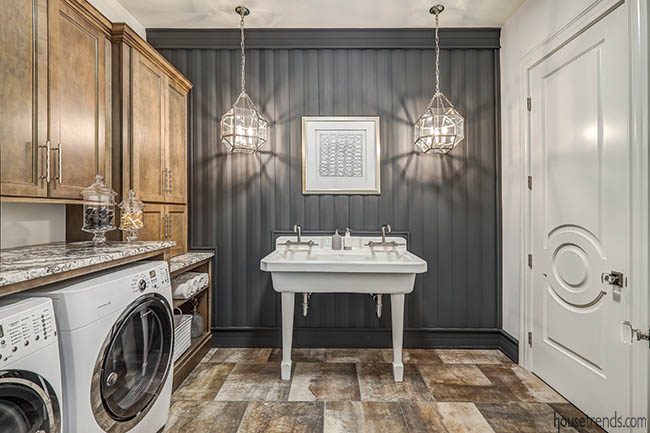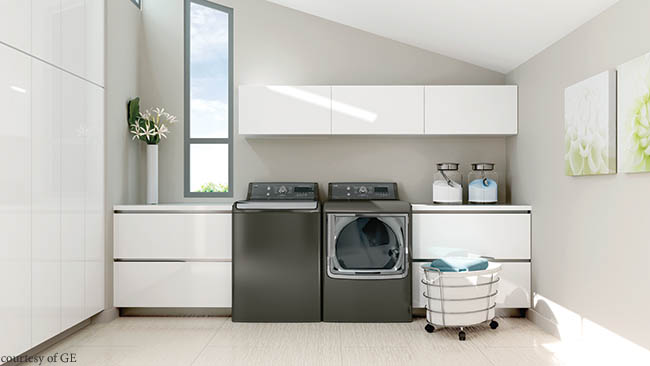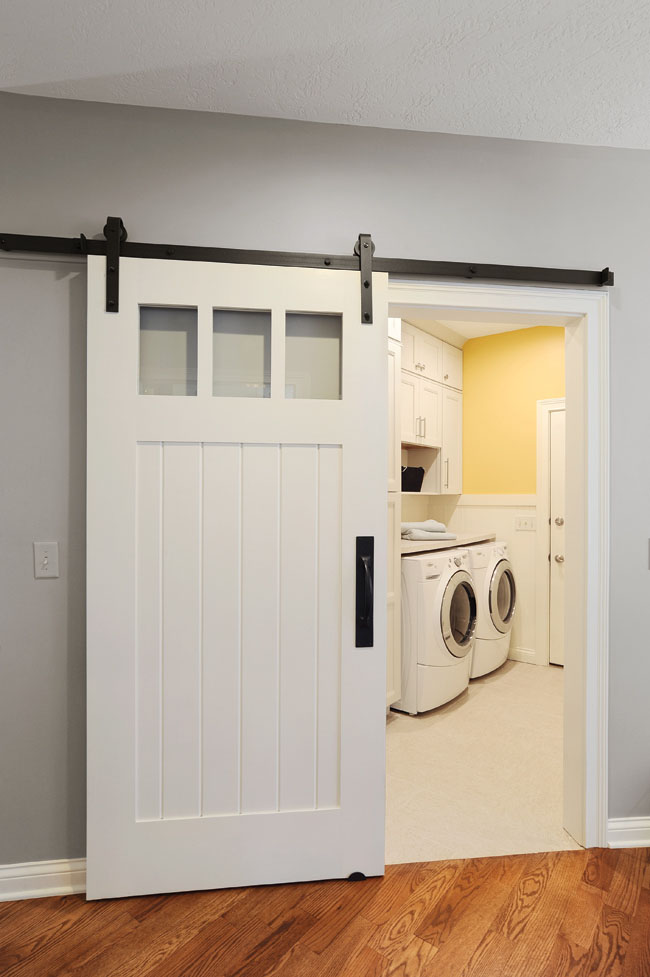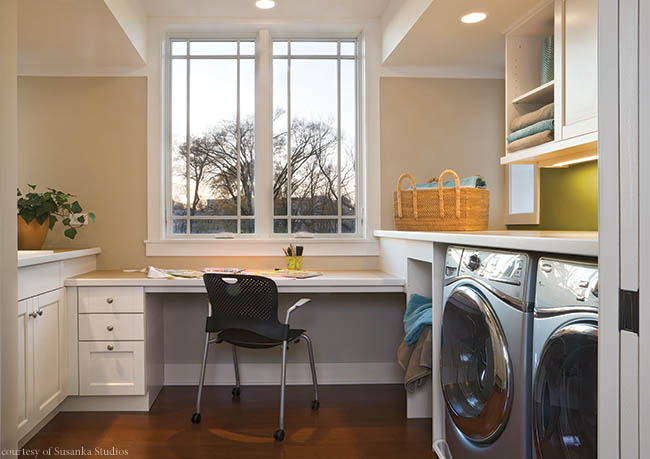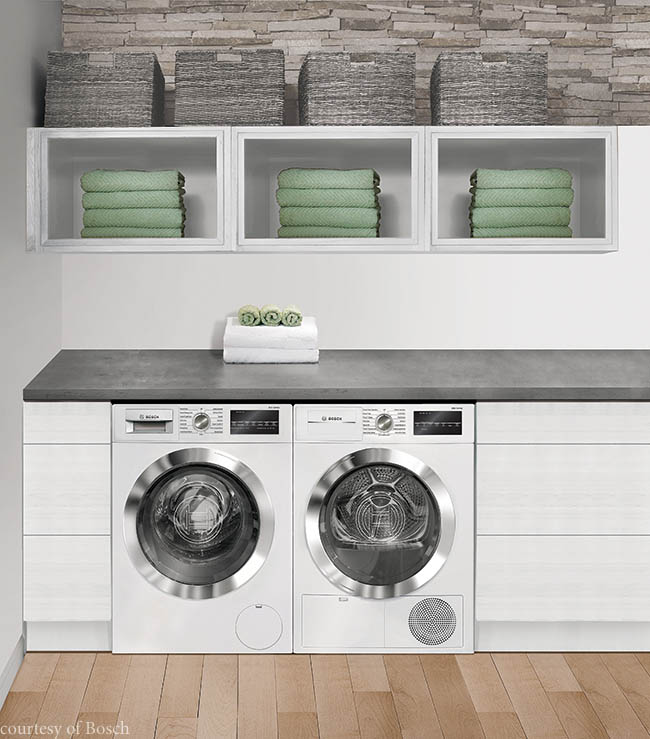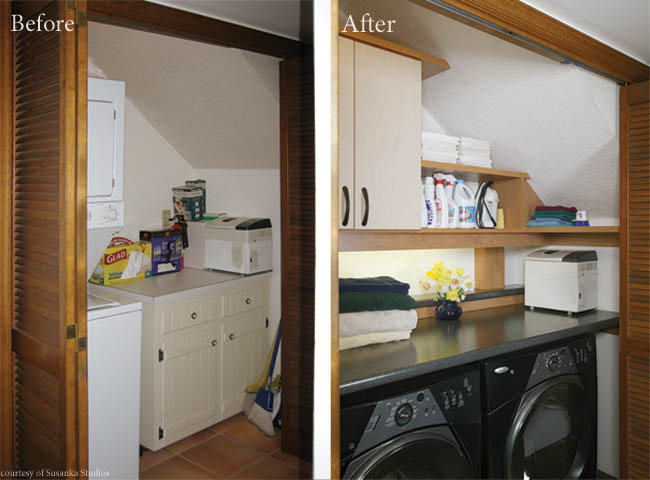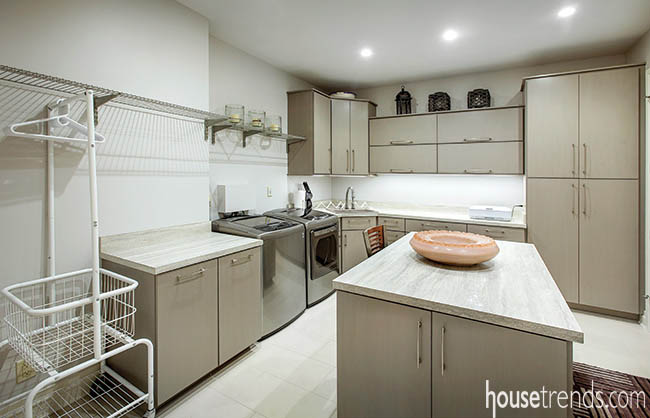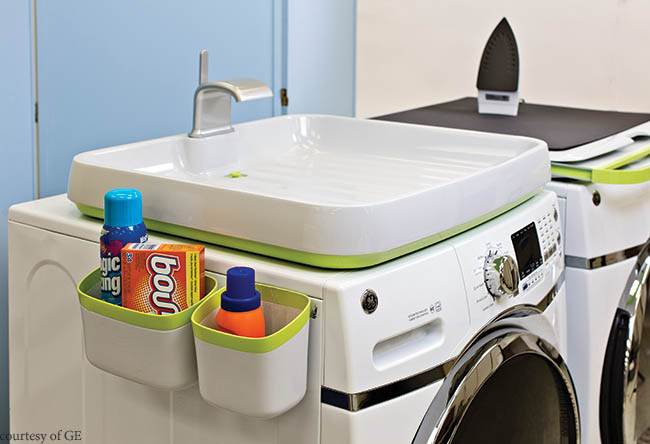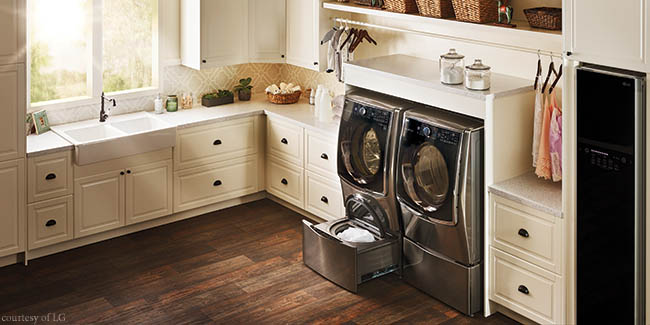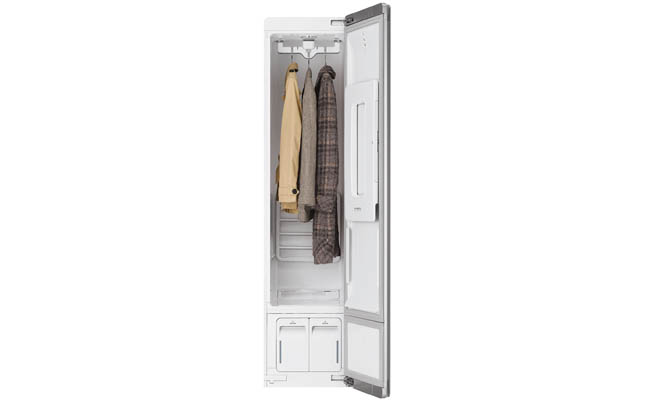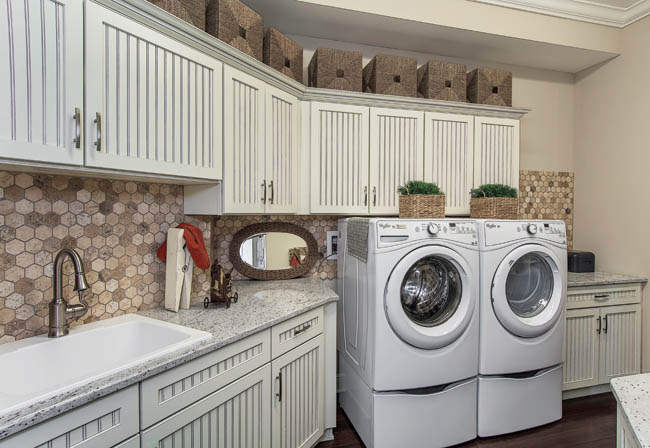“We should all do what, in the long run, gives us joy, even if it is only picking grapes or sorting the laundry,”
said author E.B. White. Selecting the right size, design, and location for your laundry room is a big part of the joy of laundry. As such, not all laundry rooms are created alike. Some families have several loads of laundry each week while other may have only a couple loads and several bags of dry cleaning or any other kind of combination in between.
“The biggest decision to make in designing a laundry room is to figure out where to locate the room,” says Sarah Susanka, FAIA architect, and author of nine popular residential architecture books and founder of the website notsobighouse.com. She continues to explain that in her experience, “in a two-story home, most laundry is generated on the second floor close to the bedrooms, so it often makes sense to locate the laundry room on the second floor.”
Sometimes the central laundry space is on the first floor with a secondary set of machines on the second floor, such as in the master suite. Susanka mentions, however, that most homes with less than 2,400 square feet do not on average make full use of two laundry rooms. If the laundry room is on the first floor or basement, consider adding a laundry chute.
“However, if the family typically does laundry while doing other things in the home, then it might make better sense to have the laundry room on the first floor near the kitchen or family room,” says Susanka. If the first floor is the location of choice, think of a closet, alcove, or a spare room.
Some people like to combine areas with the laundry room such as a pantry or perhaps a small desk area. The one and only place Susanka recommends homeowners avoid for a laundry room would be the hallway between an attached garage and the rest of the home as the sights and sounds of laundry in progress are not the most welcoming.
“Think about how the family will in reality use the laundry room rather than getting too caught up with ‘ideas’ about how to design an ideal laundry room,” says Susanka. Write lists of things you might want to store in the same vicinity within cabinetry or on shelving. Laundry room sizes can vary quite a bit, ranging anywhere from an alcove off the hallway, to a dedicated room measuring 110 square feet or larger.
“You want to design the laundry room so that it is as much of an oasis as is possible,” says Susanka. She makes an excellent point, stating that if a space is not beautiful, it simply won’t be used and ends up as wasted space. In her home, Susanka built an extra wall between the back of the machines and the mechanical knobs and tubes to cover up unsightly parts. Appropriate task and ambiance lighting also help tremendously.
Some essentials for a laundry room certainly would include a countertop or table for folding, a storage system including a designated place for detergent, an ironing board, and a drying or hanging bar. The ironing board could be portable and often is recommended by expert designers to be mini-sized. Drip dry areas for laundry rooms are quickly becoming things of the past.
“Honestly, within the past 15 years, we are starting to see a decrease in the need for hand-washing and drip-dry because appliances are becoming more advanced,” says Susanka.
The number of appliance choices is indeed now more varied than ever before. Not only can appliances stack, but there is even a washing machine that has a secondary washing machine for delicates located within the “pedestal” part of a front-loader, while others have remote controls, are connecting to Wi-Fi and will send messages to a smartphone.
Nearly all washing machines are gentler on clothing than the agitators of the past. Front-loaders are still the gentlest machines, even surpassing new HE top-loaders.
Likely the most revolutionary on the market today is a steamer closet unit that will freshen up wrinkled and slightly smelly clothing inside the comforts of your home.
The modern home laundry room has evolved primarily due to new appliances that have many more options and are so much better at washing even the most delicate items.
First, decide where to locate the laundry, secondly, look at which machines are preferred, and finally organize the rest of the space so that everything in the laundry room has its unique place. Lastly, decorate the space so it is pleasant and welcoming.

